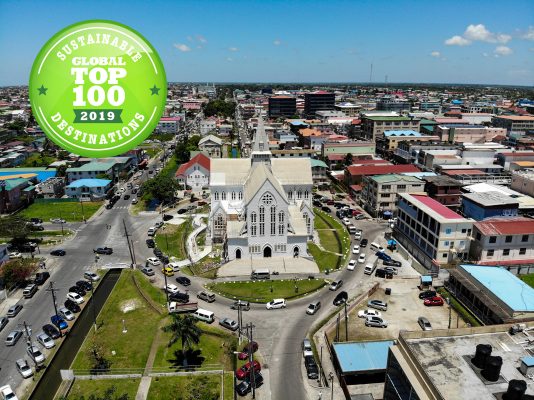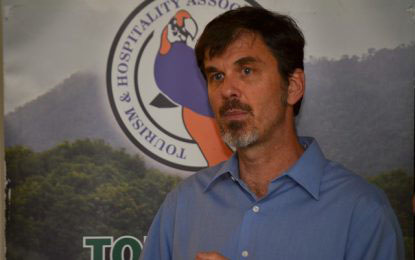More than 54% of the world’s population lives in urban areas. The net result is that cities have become global economic hubs, driving growth and innovation and attracting an increasing number of visitors who travel to do business, experience their culture and attractions and relocate themselves and their families. More people living in cities have resulted in the consequent need to invest in modern infrastructure while protecting the built heritage that makes each city unique, and to make better use of public spaces, including vacant green spaces and derelict brownfield lands.
The growth in cities has spurred the trend of city tourism, becoming one of the fastest growing categories in the tourism sector. Over half a billion trips are made to cities annually representing 45% of global international travel. These travelers want a more comprehensive menu of things to do, which results in a greater percentage of their expenditure remaining in the cities they visit. The implications of these trends for Georgetown is that stakeholders need to develop more products for a refreshed brand offer.
As the gateway to the wider tourism offerings of Guyana, Georgetown could capture more of the tourism spending of travelers in the city before they venture into Guyana’s hinterland by improving and extending its offer, the investment in which will help to revitalise the city’s urban fabric. In the process, there is a need to strengthen the Georgetown brand.

The perceptions are generally negative and our international brand image is weak compared to that of the destination as a whole. There is an opportunity to change this reality and create the best possible public image of Georgetown by investing in public spaces using value-added Place-Making.
Place-making is a community-driven process that helps to localise services and spending, resulting in economic development and the creation of social and place capital. It is also a collaborative process by which community leaders can work together to shape the public realm in order to maximise shared value. More than just promoting better urban design, place-making facilitates creative patterns of use, paying particular attention to the physical, cultural, and social identities that define a place and support its ongoing evolution.
The primary aim of place-making in Georgetown is to strengthen the connection between the residents of the city and the public places they share through ongoing dialogue and collaboration between the private, public and civil sectors at all levels.
The place-making initiative proposed for Georgetown would focus primarily on identifying and prioritising public spaces and facilities that need to be revitalised, and work with governmental, business and community leaders to reinvent them. This approach to place-making is based on the principle that community members are the experts on their neighbourhoods and communities as a whole and when they have a sense of ownership of these spaces, they will invest time and resources into maintaining and improving them.
Why Place-making is important in Georgetown:
● Positions Georgetown, a pioneering city in the Caribbean region, to transform its urban spaces into livable public places
● Draws together the community which enhances cultural and community development
● Contributes to the quality of life as it improves public health and mitigates congested areas
● Speeds up the process of revitalisation by making sure that the key places within the city complement each other and create a major regional destination
● Initiates and energises the process of revitalisation by providing crowd-sourced ideas for immediate improvements in an incremental and experimental way. A perusal of the World Travel & Tourism Council’s (WTTC) website reveals the world’s best performing tourism cities as of October 21, 2018. https://www.wttc.org/about/media-centre/press-releases/press-releases/2018/wttc-reveals-the-worlds-best-performing-tourism-cities/ (Copyright @ WTTC 2019).
Place-making is a proven methodology to realise the opportunity for place-making in Georgetown and therefore there is a need for a strategy and detailed action plan to integrate the planning and design of Georgetown’s greater downtown as a place with investment in the existing public spaces and facilities, and the new real estate, tourism and retail facilities required by the plan, feeding into an attractive tourism brand offer, and its marketing and promotion. The process begins with engaging stakeholders from the grassroots on up to co-create a vision for place-making in a defined area of downtown Georgetown. The output from which will inform a strategic place-making planning process and potential action projects for implementation.
Place-making plans are not just about more effectively utilising public spaces and facilities; they’re also about better understanding potential domestic and international target market audiences, their behaviours and the mix of activities they want to spend time on; then working out how to invest in their introduction of improvement. Therefore, a place-making strategy for Georgetown will enables the city and stakeholders to move on to developing a product mix for both residents and workers and tourists, and manage that mix for target market audiences. This methodology has been successfully implemented in many major metropolitan areas including but not limited to Bogotá and Medellín in Colombia; Santiago in Chile; Durban in South Africa; Melbourne in Australia; Detroit in United States; and Nairobi in Kenya.
Anticipated Outcomes:
The following outcomes would be created through the development and implementation of a place-making strategy and action plan for Georgetown:
Short-term Outcomes:
●An inclusive approach designed to empower stakeholders at all levels and equip them with the knowledge and know-how to replicate the process throughout Georgetown
● Significant consultation with local stakeholders in the formulation of the strategy and their engagement in its implementation going forward and substantial “ownership” of the strategy among key stakeholders
● Increased interest in and commitment from local landowners and developers in the investment opportunities (tourism, retail, food and beverage, accommodation) in Georgetown
● Creation of a compelling brand offer for visitors and locals which locals want to develop and deliver medium & long-term outcomes
● Nicer, better maintained public parks, facilities and green spaces
● Increased investment opportunities and attraction of investment in projects
● Beautification of public spaces and communities including creation of public art exhibits and murals and new interpretive signage for historic sites and buildings
● Better utilisation of public buildings
●Reduced congestion through improved pedestrian and bicycle mobility
● Improved solid waste management
● A better city to live in, do business in, and to visit.
Place-making is a proven method for improving shared public spaces and localising services and spending, resulting in improved socio-economic development. With community leaders, the public and private sectors, and the civil sector working together to shape public spaces, they can maximise shared value and benefits.
A Guyana Tourism Authority Feature





